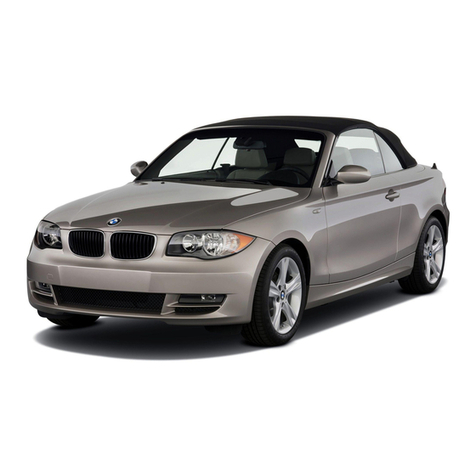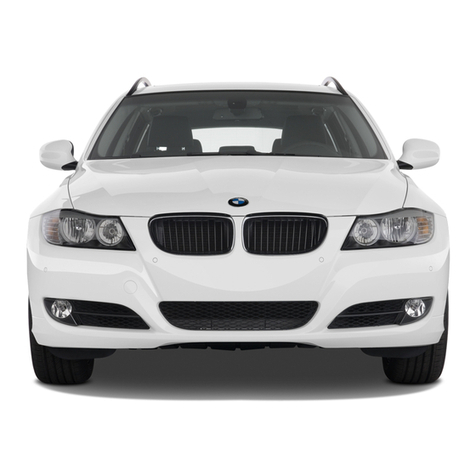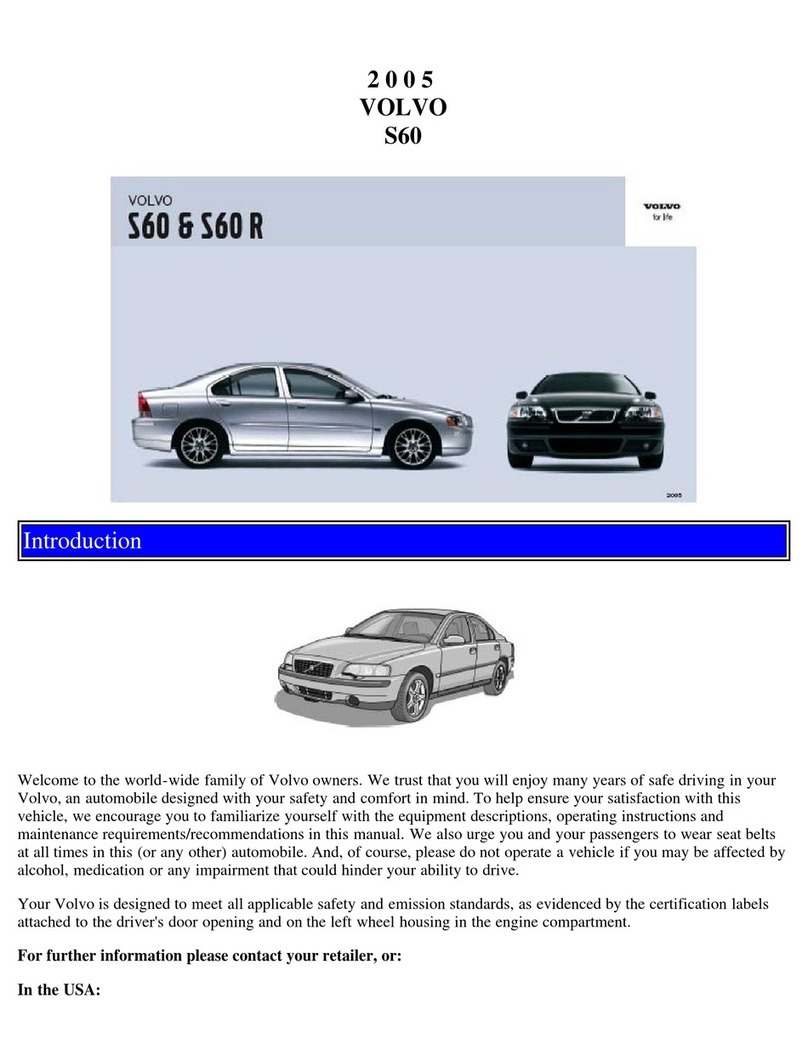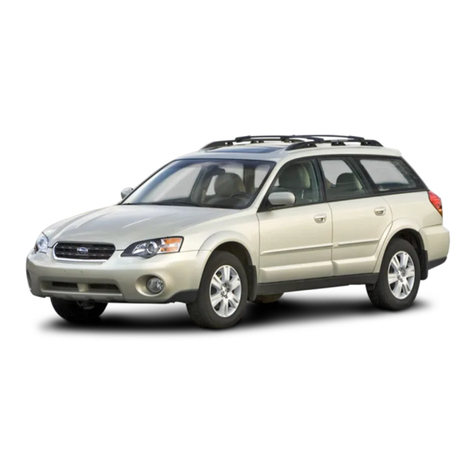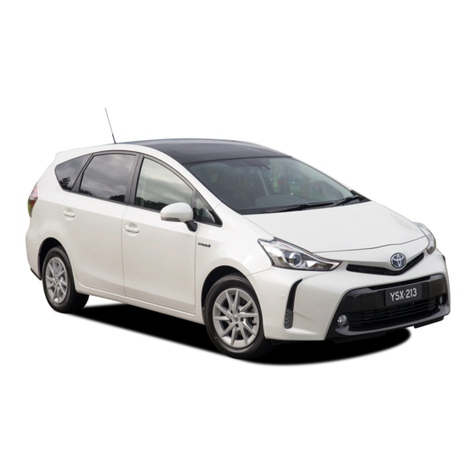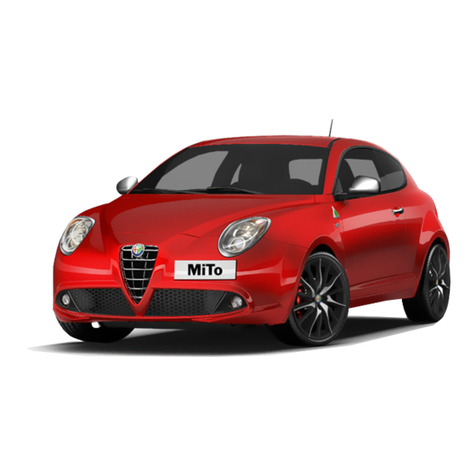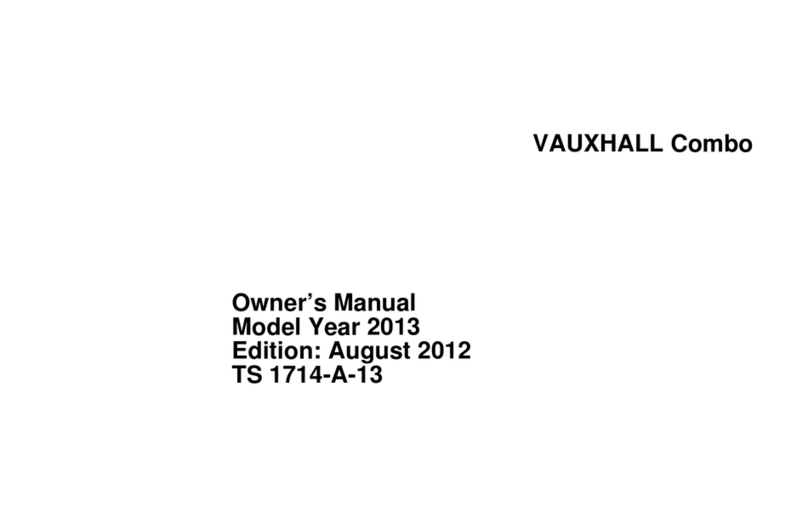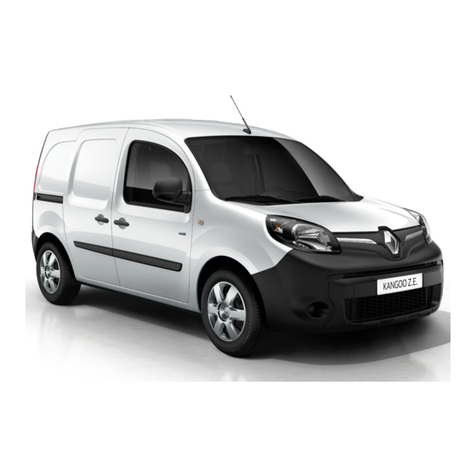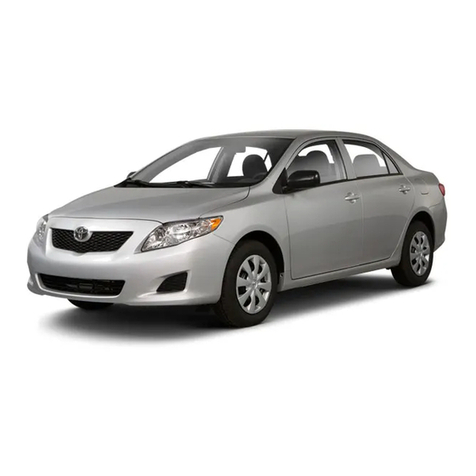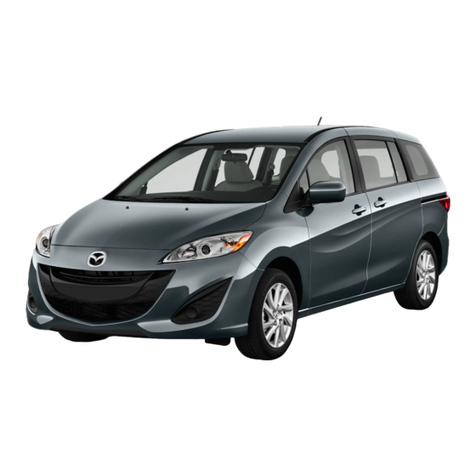BMW F12 2011 Installation guide

Technical�training.
Product�information.
BMW�Service
F12�Chassis�Dynamics

General�information
Symbols�used
The�following�symbol�is�used�in�this�document�to�facilitate�better�comprehension�or�to�draw�attention
to�very�important�information:
Contains�important�safety�information�and�information�that�needs�to�be�observed�strictly�in�order�to
guarantee�the�smooth�operation�of�the�system.
Information�status�and�national-market�versions
BMW�Group�vehicles�meet�the�requirements�of�the�highest�safety�and�quality�standards.�Changes�in
requirements�for�environmental�protection,�customer�benefits�and�design�render�necessary�continu-
ous�development�of�systems�and�components.�Consequently,�there�may�be�discrepancies�between
the�contents�of�this�document�and�the�vehicles�available�in�the�training�course.
This�document�basically�relates�to�the�European�version�of�left�hand�drive�vehicles.�Some�operating�el-
ements�or�components�are�arranged�differently�in�right-hand�drive�vehicles�than�shown�in�the�graphics
in�this�document.�Further�differences�may�arise�as�the�result�of�the�equipment�specification�in�specific
markets�or�countries.
Additional�sources�of�information
Further�information�on�the�individual�topics�can�be�found�in�the�following:
• Owner's�Handbook
• Integrated�Service�Technical�Application.
Contact:�conceptinfo@bmw.de
©2010�BMW�AG,�Munich
Reprints�of�this�publication�or�its�parts�require�the�written�approval�of�BMW�AG,�München
The�information�contained�in�this�document�forms�an�integral�part�of�the�technical�training�of�the�BMW
Group�and�is�intended�for�the�trainer�and�participants�in�the�seminar.�Refer�to�the�latest�relevant�infor-
mation�systems�of�the�BMW�Group�for�any�changes/additions�to�the�technical�data.
Status�of�the�information:�November�2010
VH-23/International�Technical�Training

F12�Chassis�Dynamics
Contents
1. Introduction.............................................................................................................................................................................................................................................1
1.1. Driving�dynamics�and�comfort..........................................................................................................................................................1
1.2. Bus�system�overview....................................................................................................................................................................................... 2
2. Models...............................................................................................................................................................................................................................................................5
2.1. Comparison..................................................................................................................................................................................................................... 5
3. Chassis�and�suspension................................................................................................................................................................................................. 6
3.1. Front�axle............................................................................................................................................................................................................................ 6
3.1.1. Technical�data............................................................................................................................................................................7
3.1.2. Service�Information........................................................................................................................................................... 7
3.2. Rear�axle...............................................................................................................................................................................................................................8
3.2.1. Technical�data........................................................................................................................................................................10
3.2.2. Service�Information.......................................................................................................................................................10
3.3. Suspension/dampers................................................................................................................................................................................... 11
3.3.1. Electronic�Damper�Control�(EDC)..........................................................................................................11
3.4. Wheels�&�Tires......................................................................................................................................................................................................12
3.5. Tire�Pressure�Monitor�System..................................................................................................................................................... 13
3.5.1. System�function................................................................................................................................................................. 13
3.5.2. System�overview............................................................................................................................................................... 15
3.5.3. System�wiring�diagram............................................................................................................................................16
3.5.4. Notes�for�Service............................................................................................................................................................. 17
4. Brakes............................................................................................................................................................................................................................................................19
4.1. Service�brakes........................................................................................................................................................................................................ 19
4.2. Electromechanical�Parking�Brake�(EMF)...................................................................................................................... 20
4.2.1. System�overview............................................................................................................................................................... 21
4.2.2. System�wiring�diagram............................................................................................................................................23
4.2.3. System�structure.............................................................................................................................................................. 24
4.2.4. System�function................................................................................................................................................................. 24
5. Steering......................................................................................................................................................................................................................................................33
5.1. Basic�steering..........................................................................................................................................................................................................34
5.1.1. System�overview............................................................................................................................................................... 34
5.1.2. System�wiring�diagram............................................................................................................................................36
5.2. Integral�Active�Steering........................................................................................................................................................................... 37
5.2.1. Functional�ranges............................................................................................................................................................ 38
5.2.2. System�wiring�diagram............................................................................................................................................41
5.2.3. EPS�with�24�V.......................................................................................................................................................................43
5.2.4. Rear�axle�slip�angle�control�HSR............................................................................................................. 50

F12�Chassis�Dynamics
Contents
6. Driving�stability�control................................................................................................................................................................................................53
6.1. Directions�of�action........................................................................................................................................................................................ 53
6.2. Dynamic�Stability�Control�DSC...................................................................................................................................................53
6.3. Electronic�Damper�Control�(EDC)........................................................................................................................................... 54
6.4. Active�Roll�Stabilization�ARS�(Dynamic�Drive).................................................................................................... 55
6.5. Drive�dynamic�control�switch......................................................................................................................................................... 60
6.5.1. Handling�dynamics�programs.......................................................................................................................62

F12�Chassis�Dynamics
1.�Introduction
1
1.1.�Driving�dynamics�and�comfort
F12�Chassis�and�suspension
Index Explanation
1 Suspension/dampers
2 Electromechanical�Power�Steering�(EPS)
3 Integral�V�rear�axle
4 Electromechanical�Parking�Brake�(EMF)
5 Wheels
6 Dynamic�Stability�Control�(DSC)
7 Brakes
8 Double-wishbone�front�axle
The�chassis�and�suspension�of�the�F12�is�based�on�the�F10.�It�has�been�adapted�to�the�specific�re-
quirements�of�the�F12�in�order�to�achieve�outstanding�driving�dynamics�while�maintaining�extremely
high�standards�of�comfort.
A�double-wishbone�front�axle�is�used�instead�of�the�double�pivot�spring-strut�axle�of�the�E64.�The�inte-
gral�V�rear�axle�replaces�the�integral�IV�rear�axle�that�featured�in�the�E64.

F12�Chassis�Dynamics
1.�Introduction
2
The�F12�features�innovations�already�familiar�from�other�BMW�models,�such�as�Integral�Active�Steer-
ing,�Integrated�Chassis�Management�(ICM),�Dynamic�Drive�and�Electronic�Damper�Control�(EDC).
1.2.�Bus�system�overview
F12�Bus�System�overview

F12�Chassis�Dynamics
1.�Introduction
3
Index Explanation
1 Control�units�with�wake-up�authorization
2 Start-up�node�control�units�for�starting�up�and�synchronizing�the�FlexRay�bus
system
ACC-SEN Active�Cruise�Control�Sensor
ACSM Advanced�Crash�Safety�Module
AL Active�steering
AMPT Top�HiFi�amplifier
BCU Battery�Charge�Unit�(for�auxiliary�battery�only�w/IAC)
CAS Car�Access�System
CID Central�information�display
COMBOX Combox�(Combox�multimedia,�Combox�multimedia�with�telematics)
CON Controller
CVM Convertible�top�module
DME Digital�Motor�Electronics
DSC Dynamic�Stability�Control
DVDC DVD�changer
EDCSHL Electronic�Damper�Control�satellite,�rear�left
EDCSHR Electronic�Damper�Control�satellite,�rear�right
EDCSVL Electronic�Damper�Control�satellite,�front�left
EDCSVR Electronic�Damper�Control�satellite,�front�right
EGS Electronic�transmission�control
EKPS Electronic�fuel�pump�control
EMF Electromechanical�parking�brake
EPS Electronic�power�steering�(electromechanical�power�steering)
FRM Footwell�module
GWS Gear�selector�switch
HEADUNIT Headunit�(car�information�computer�or�car�information�computer�basic�II)
HSR Rear�axle�slip�angle�control
HUD Head‐Up�Display
ICM Integrated�Chassis�Management
IHKA Automatic�integrated�heating�and�A/C�control�unit
JBE Junction�box�electronics
KAFAS Camera-based�driver�support�systems
KOMBI Instrument�panel
NVE Night�vision�electronics

F12�Chassis�Dynamics
1.�Introduction
4
Index Explanation
PDC Park�Distance�Control
PMA Parking�maneuvering�assistant
TPMS Tire�Pressure�Monitor�System
SINE Siren�with�tilt�alarm�sensor
SMBF Front�passenger�seat�module
SMFA Driver's�seat�module
SWW Blind�Spot�Detection�(Lane�change�warning)
SZL Steering�column�switch�cluster
TRSVC Control�unit�for�camera�systems
VDM Vertical�Dynamics�Management
VSW Video�switch
ZGM Central�gateway�module

F12�Chassis�Dynamics
2.�Models
5
2.1.�Comparison
The�following�technical�data�allows�a�comparison�to�be�made�between�the�chassis�and�suspension�of
the�F12�and�its�predecessor�the�E64.
Designation E64�BMW�650i F12�BMW�650i
Wheelbase 2780�mm 2855�mm
Front�track�width 1558�mm 1600�mm
Rear�track�width 1596�mm 1657�mm
Tires,�basic�wheels 245/45�R18�96W 245/45�R18�96Y
Basic�wheel�rims 8J�x�18�IS�14 8J�x�18�IS�30
Front�axle Double�pivot�spring-
strut�front�axle
Double-wishbone�front�axle
Springs/dampers Steel�spring/con-
ventional�or�EDC
Steel�spring/con-
ventional�or�EDC
Anti-roll�bar,�front mechanical�or�hy-
draulic�(Dynamic�Drive)
mechanical�or�hy-
draulic�(Dynamic�Drive)
Front�brake�disc�dia. 348mm 374mm
Steering Hydraulic�or�active�steering Electronic�Pow-
er�Steering�EPS
Rear�axle Integral�IV�rear�axle Integral�V�rear�axle
Rear�suspension/dampers Steel�spring,�con-
ventional�or�EDC
Steel�spring/con-
ventional�or�EDC
Rear�anti-roll�bar mechanical�or�hy-
draulic�(Dynamic�Drive)
mechanical�or�hy-
draulic�(Dynamic�Drive)
Rear�brakes�disc�dia. 345mm 370mm
Parking�brake Drum�brake�with�park-
ing�brake�lever�and�au-
tomatic�cable�setting
Disc�brake�with�electrome-
chanical�parking�brake

F12�Chassis�Dynamics
3.�Chassis�and�suspension
6
3.1.�Front�axle
F12�Double-wishbone�front�axle
Index Explanation
1 Spring�strut
2 Upper�wishbone
3 Swivel�bearing
4 Anti-roll�bar�link
5 Lower�wishbone
6 Wheel�hub
7 Track�rod
8 Trailing�link
9 Front�axle�support
10 Anti-roll�bar�with�hydraulic�actuator�(Dynamic�Drive)
11 Steering�box

F12�Chassis�Dynamics
3.�Chassis�and�suspension
7
The�F12�double-wishbone�front�axle�was�originally�introduced�with�the�E70/E71.�The�design�was�fur-
ther�developed�and�also�used�in�the�F01/F02,�F07,�and�F10.
Conventional�shock�absorbers�or�EDC�can�be�installed�in�the�double-wishbone�front�axle.�In�addition,�It
is�can�also�be�equipped�for�use�in�an�all-wheel�drive�configuration.
3.1.1.�Technical�data
Designation F12
Castor�angle 7°�0'
Camber -0°�29'�±�30'
Total�toe-in 10'�±�12'
Toe�difference�angle ≤�12'
Steering�axis�inclination 9°�57'
Rim�offset�IS 30�mm
Kingpin�offset 2.89�mm
Track�width 1600�mm
maximum�outer�steer�angle 33°�0'
maximum�inner�steer�angle 42°�14'
3.1.2.�Service�Information
The�following�tables�show�when�wheel�alignment�of�the�double-wishbone�front�axle�is�necessary.
Component�replaced Wheel�alignment�required
Front�axle�support YES
Steering�box YES
Lower�Wishbone YES
Rubber�mount�for�lower�wishbone YES
Trailing�link NO
Rubber�mount�for�trailing�link NO
Upper�wishbone NO
Rubber�mount�for�upper�wishbone NO
Track�rod YES
Swivel�bearing YES
Wheel�bearing NO
Spring�strut NO
Coil�spring NO
Support�bearing NO

F12�Chassis�Dynamics
3.�Chassis�and�suspension
8
Screw�connection�unfastened Wheel�alignment�required
Front�axle�support�to�body�(lowering) NO
Steering�box�to�front�axle�support YES
Lower�wishbone�to�front�axle�support YES
Lower�wishbone�to�swivel�bearing NO
Trailing�link�to�front�axle�support NO
Trailing�link�to�swivel�bearing NO
Upper�wishbone�on�body NO
Upper�wishbone�to�swivel�bearing NO
Track�rod�to�steering�box NO
Track�rod�end�to�track�rod YES
Track�rod�end�to�swivel�bearing NO
Spring�strut�to�Lower�wishbone NO
Support�bearing�to�body NO
Bottom�steering�shaft�to�steering�box NO
Steering�column�to�bottom�steering�shaft NO
3.2.�Rear�axle
The�integral�V�rear�axle�installed�in�the�F12�is�an�innovative�further�development�of�the�integral�IV�rear
axle�in�the�E60/65.�The�optimized�lightweight�rear�axle�made�of�solid�aluminium�has�been�specifically
adapted�to�the�new�demands�for�more�power�and�torque.
The�integral�V�rear�axle�of�the�F12�is�designed�for�the�Integral�Active�Steering�option�code�(SA�2VH)
chassis�and�suspension�control�system�.

F12�Chassis�Dynamics
3.�Chassis�and�suspension
9
F12�Integral�V�rear�axle
Index Explanation
1 Compression�strut
2 Spring�strut
3 Upper�wishbone
4 Integral�link
5 Wheel�carrier
6 Wheel�bearing
7 Trapezoidal-link�suspension�(swinging�arm)

F12�Chassis�Dynamics
3.�Chassis�and�suspension
10
Index Explanation
8 Camber�link
9 Rubber�mount�for�rear�axle
10 Rear�axle�support
11 HSR�actuator
3.2.1.�Technical�data
650i
Rear�tire 245/40�R19
Rear�wheel�rim 19�x�8.5
Total�toe-in 14'�±�12'
Camber -1°50'�±�25'
Track�width 1629�mm
Rim�offset�IS 44�mm
3.2.2.�Service�Information
The�following�tables�show�when�wheel�alignment�at�the�integral�V�rear�axle�is�necessary.
Component�replaced Wheel�alignment�required
Rear�axle�support YES
Rubber�mount�for�rear�axle NO
Swinging�arm YES
Integral�link YES
Ball�joint�in�swinging�arm YES
Camber�link YES
Wishbone YES
Wheel�carrier YES
Wheel�bearing NO
Spring�strut NO
Support�bearing NO
Screw�connection�unfastened Wheel�alignment�required
Rear�axle�support�to�body NO
Front�compression�strut�to�body NO
Rear�compression�strut�to�body NO
Front�swinging�arm�to�rear�axle�support YES

F12�Chassis�Dynamics
3.�Chassis�and�suspension
11
Screw�connection�unfastened Wheel�alignment�required
Rear�swinging�arm�to�rear�axle�support YES
Swinging�arm�to�integral�link/wheel�carrier YES
Integral�link�to�wheel�carrier NO
Camber�link�to�rear�axle�support YES
Camber�link�to�wheel�carrier NO
Wishbone�to�rear�axle�support YES
Wishbone�to�wheel�carrier YES
Spring�strut�to�wheel�carrier/swinging�arm NO
3.3.�Suspension/dampers
Both�axles�of�the�F12�are�equipped�as�standard�with�steel�springs�and�EDC�shock�absorbers.
3.3.1.�Electronic�Damper�Control�(EDC)
F12�Components�of�EDC
Dynamic�Damper�Control�is�standard�and�is�a�sub-function�of�the�Vertical�Dynamics�Management
VDM.�With�EDC,�the�actuator�unit�and�the�specified�satellite�sensors�at�the�shock�absorber�are�con-
nected�to�the�VDM�control�unit�via�FlexRay.�The�damper�characteristics�stored�in�the�VDM�control�unit
can�be�selected�via�the�drive�dynamic�control�switch�in�the�center�console.

F12�Chassis�Dynamics
3.�Chassis�and�suspension
12
The�primary�objective�of�the�EDC�system�is�to�increase�ride�comfort�and�maintain�a�high�standard�of
driving�safety�without�compromise.�Greater�ride�comfort�is�achieved�if�the�vertical�movement�of�the
vehicle�body�is�virtually�eliminated�despite�excitation�of�the�vehicle�due�to�the�roadway�(unevenness,
joints)�or�cornering.�This�is�why�the�adjustable�dampers�are�operated�using�a�soft,�comfortable�damp-
ing�characteristic�in�as�many�situations�as�possible.
A�high�standard�of�driving�safety�is�guaranteed�if�the�wheels�never�lose�contact�with�the�roadway�and
deliver�a�high�bearing�force�when�necessary.�This�is�why�a�harder�damping�action�is�set�if�the�driving
situation�or�driver�intervention�(e.g.�steering,�braking)�is�required.
In�addition,�the�EDC�control�takes�steering�operations�(e.g.�transition�from�straight-ahead�driving
to�cornering)�into�account�based�on�the�steering�angle�characteristic.�If�the�EDC�detects�a�rapid�in-
crease�in�the�steering�angle,�the�controller�deduces�that�cornering�is�starting�and�can�now�set�a�harder
damper�setting�at�the�outer�cornering�wheels�as�a�preventative�measure.�The�EDC�therefore�supports
the�ARS�control�and�thus�assists�in�reducing�the�rolling�movement�of�the�vehicle.
EDC�can�also�detect�when�the�driver�is�braking�based�on�the�information�supplied�by�the�DSC�on�brake
pressure.�A�high�brake�pressure�normally�causes�a�pitching�movement�of�the�vehicle.�EDC�counteracts
this�by�setting�the�front�damper�for�higher�damping�forces.�This�also�improves�the�braking�force�distri-
bution�at�the�front/rear�which�produces�a�small�braking�distance�advantage�(when�compared�to�a�vehi-
cle�without�EDC).
The�basic�damping�force�level�is�adapted�by�the�EDC�controller�depending�on�which�damping�program
is�selected�by�the�driver�(comfort/sport).�Irrespective�of�this,�e.g.�even�if�the�Comfort�program�is�se-
lected,�high�damping�forces�act�on�individual�wheels�in�critical�driving�situations.�A�reference�damp-
ing�force�is�output�via�FlexRay�for�every�wheel�or�damper�according�to�the�prioritization�of�the�individu-
al�controller�components.�In�addition,�a�default�current�value�for�the�quiescent�operating�point�is�speci-
fied�for�the�dampers.
3.4.�Wheels�&�Tires
Run-flat�tires�are�fitted�in�the�F12�as�standard.
650i
Front�tire 245/40�R19�all�season�run�flat�(standard)
245/35�R20�performance�tire�(option)
Rear�tire 245/40�R19�all�season�run�flat�(standard)
275/30�R20�performance�tire�(option)
Front�wheel�rim 19�x�8.5�(standard)
20�x�8.5�(option)
Rear�wheel�rim 19�x�8.5�(standard)
20�x�9.0�(option)

F12�Chassis�Dynamics
3.�Chassis�and�suspension
13
3.5.�Tire�Pressure�Monitor�System
3.5.1.�System�function
The�Tire�Pressure�Monitor�System�is�installed�in�the�F12.
The�direct�measuring�TPM�system�(RDC)�consists�of�the�TPMS�control�unit�with�integrated�reception
aerial�and�four�wheel�electronics.�It�was�possible�to�reduce�the�number�of�components�and�cost�of�the
TPM�system�by�integrating�the�reception�antenna�in�the�TPMS�control�unit.
The�four�wheel�electronics�transmit�the�tire�pressure�and�temperature�to�the�TPMS�control�unit�via
radio�communication�(433�MHz).�Once�the�wheel�electronics�have�been�woken�up,�(vehicle�speed�>
20�km/h),�a�total�of�25�telegrams�are�transmitted�once�at�two�second�intervals.�Providing�the�pressure
does�not�drop,�individual�telegrams�are�then�sent�every�18�seconds�from�the�wheel�electronics�to�the
TPMS�control�unit.�As�a�prerequisite�for�the�wheel�electronics�to�go�to�sleep,�the�wheel�must�be�at�a
standstill�for�more�than�five�minutes.
Resetting�the�tire�pressure�values
The�tire�pressure�values�are�reset�via�the�instrument�panel�(KOMBI)�or�Central�Information�Display
(CID).�The�TPMS�text�message�appears,�or�the�permanent�TPMS�indicator�light�lights�up,�in�the�instru-
ment�panel�(KOMBI)�when�the�teach-in�process�starts.
Teach-in�process
During�the�teach-in�process,�the�wheel�electronics�identification�numbers�(IDs)�are�transmitted�to�the
TPMS�control�unit.�The�TPMS�control�unit�can�identify�the�wheel�position�of�the�corresponding�wheel
electronics�via�the�identification�numbers�once�the�teach-in�process�is�complete.
Two�acceleration�sensors�are�installed�in�each�of�the�wheel�electronics�in�order�to�be�able�to�determine
their�positions.�The�acceleration�sensors�determine�the�wheel's�direction�of�rotation.�This�means�that
it�is�possible�to�differentiate�between�the�positions�of�the�right/left�wheel�electronics�at�the�vehicle.
The�high�frequency�signals�received�are�evaluated�in�order�to�determine�whether�the�wheel�electronics
are�at�the�front�or�rear�axle.�The�TPMS�control�unit�with�integrated�receiver�is�installed�in�the�luggage
compartment.�The�level�of�the�signals�received�by�the�TPMS�control�unit�from�the�wheels�on�the�rear
axle�is�higher�than�the�level�of�signals�sent�by�the�wheel�electronics�on�the�front�axle.�This�means�it�is
possible�to�determine�whether�the�wheel�electronics�are�at�the�front�or�rear�of�the�vehicle.
The�entire�teach-in�process�takes�between�roughly�one�and�twelve�minutes�at�the�most.�The�following
factors�influence�the�time�it�takes�to�complete�the�process:
• The�condition�of�the�road�(smooth�or�rough�surface)
• The�current�mode�of�the�wheel�electronics�(awake/gone�to�sleep)
• The�RDC�control�unit�already�knows�what�the�IDs�of�the�wheel�electronics�are.

F12�Chassis�Dynamics
3.�Chassis�and�suspension
14
F12�TPMS–�teach-in�process�complete
Once�the�teach-in�process�is�complete,�the�RDC�text�message�or�solid�TPMS�indicator�light�is�can-
celled.�Four�green�tire�symbols�subsequently�appear�in�the�CID.
Pressure�drop
F12�TPMS–�pressure�drop
Once�the�teach-in�process�is�complete,�the�wheel�electronics�send�the�pressure,�temperature�and�also
the�identification�numbers�of�the�tires�to�the�TPMS�control�unit�at�regular�intervals�when�driving.
If�a�pressure�change�of�>�20�kPa�(0.2�bar,�2.9�psi)�is�identified�within�two�successive�pressure�measure-
ments,�the�wheel�electronics�for�the�relevant�wheel�immediately�assumes�a�fast�transmitting�mode.�It
then�sends�information�to�the�TPMS�control�unit�at�one-second�intervals.�If�the�tire�pressure�drops�by
more�than�25%,�the�RDC�text�message�"Tire�Low"�appears.

F12�Chassis�Dynamics
3.�Chassis�and�suspension
15
3.5.2.�System�overview
F12�System�overview�of�TPMS
Index Explanation
1 Wheel�electronics�(battery-operated�sensor�with�transmitter�unit�433�MHz)
2 Instrument�panel�KOMBI
3 TPMS�control�unit�with�integrated�reception�antenna

F12�Chassis�Dynamics
3.�Chassis�and�suspension
16
3.5.3.�System�wiring�diagram
F12�System�wiring�diagram�RDC
Table of contents
Other BMW Automobile manuals

BMW
BMW 2009 750 User manual
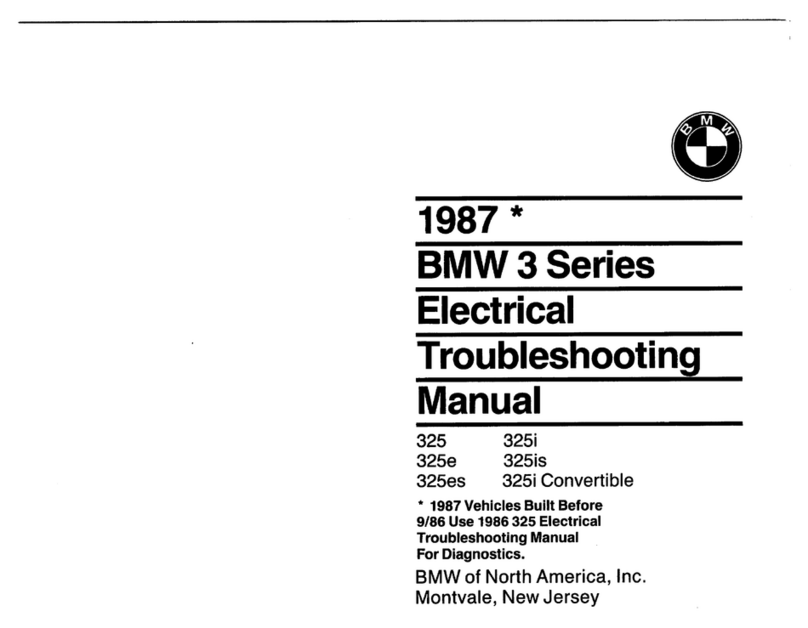
BMW
BMW 3 ELECTICAL SYSTEM Programming manual

BMW
BMW 740i SEDAN User manual

BMW
BMW SERIE 6 2005 User manual
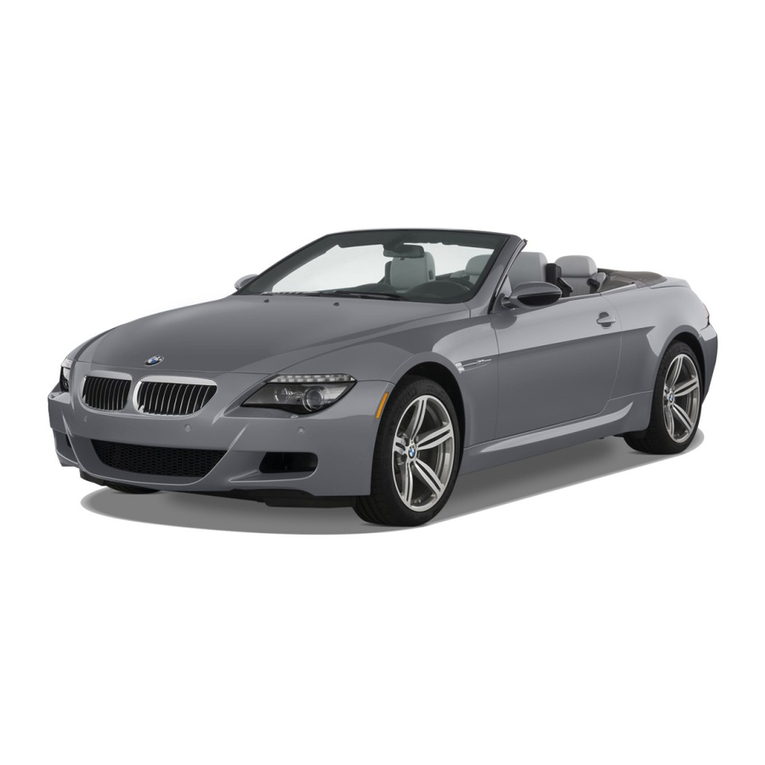
BMW
BMW 2008 6 Series User manual
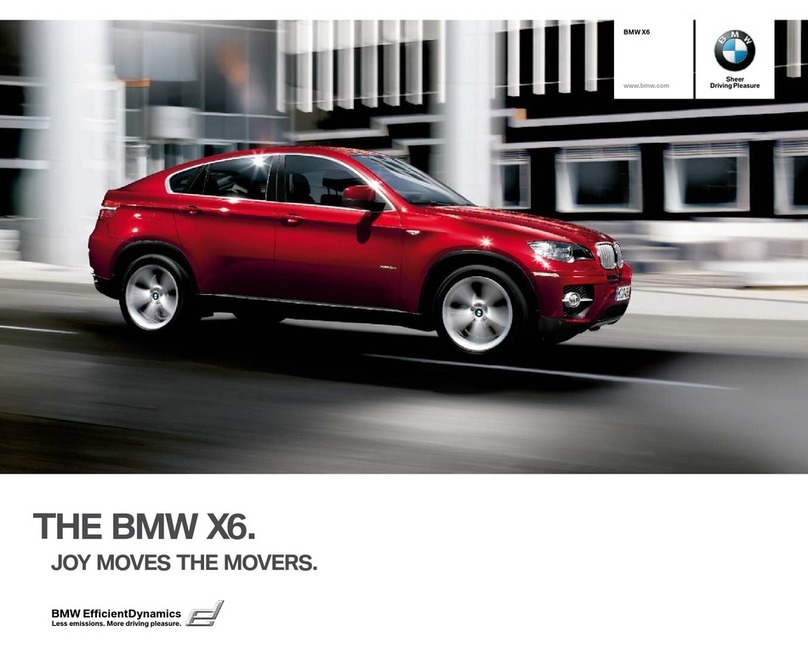
BMW
BMW X6 - BROCHURE 2010 User manual

BMW
BMW 6 COUPE 2014 Series User manual

BMW
BMW Z3 (E36/7) Programming manual
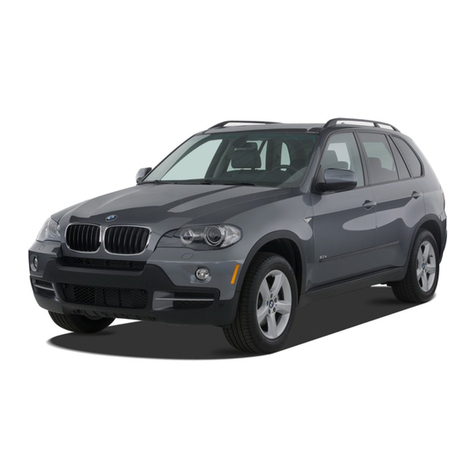
BMW
BMW 2008 M5 User manual

BMW
BMW Mini series User manual

BMW
BMW SERIE 3 CONVERTIBLE 2002 User manual

BMW
BMW E36 Programming manual

BMW
BMW 2009 X5 Instruction Manual

BMW
BMW SERIE 5 SPORT WAGON 2004 User manual

BMW
BMW 3 SERIES SEDAN - PRODUCT CATALOGUE User manual

BMW
BMW 2006 325xi Sedan User manual
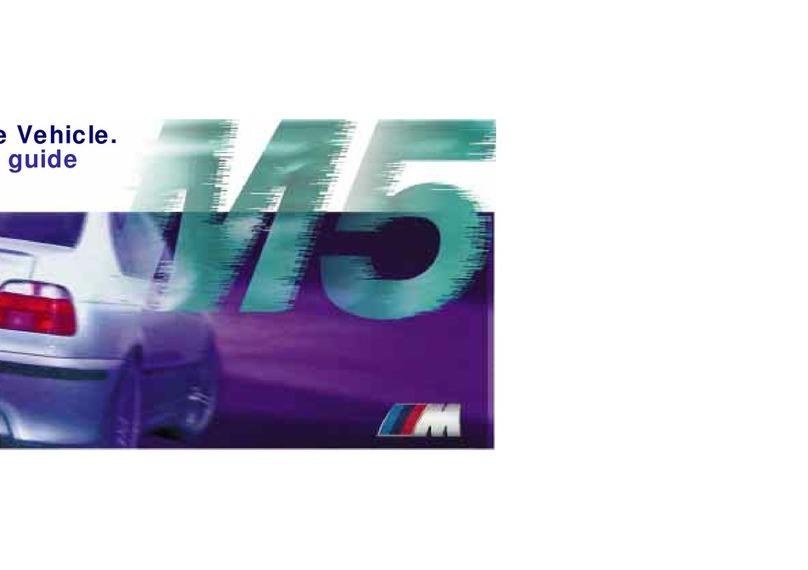
BMW
BMW M5 2000 User manual
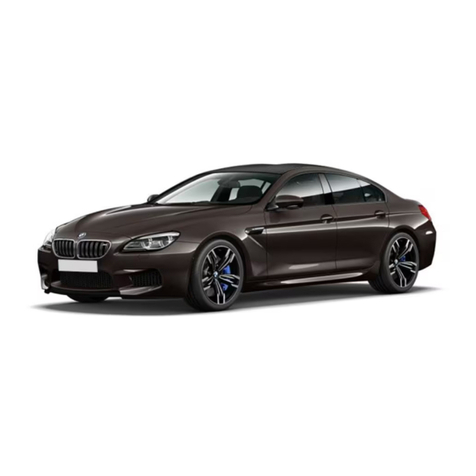
BMW
BMW M6 - User manual
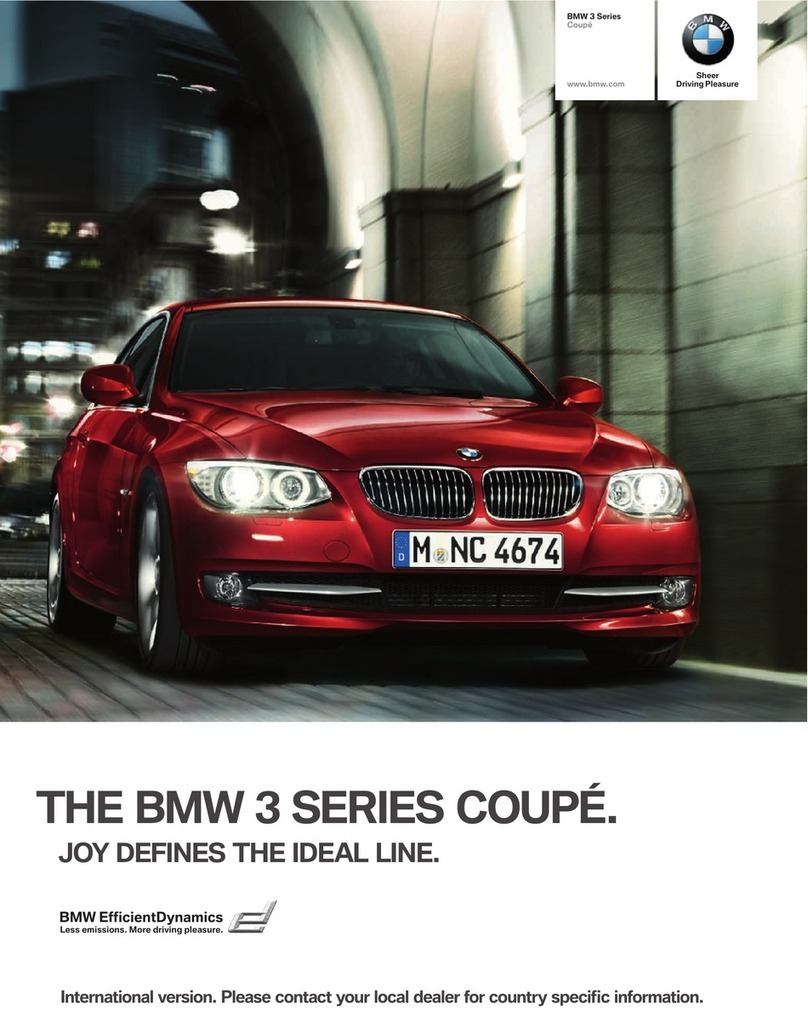
BMW
BMW 318I - BROCHRUE 2010 User manual

BMW
BMW 318ic 1992 Programming manual


